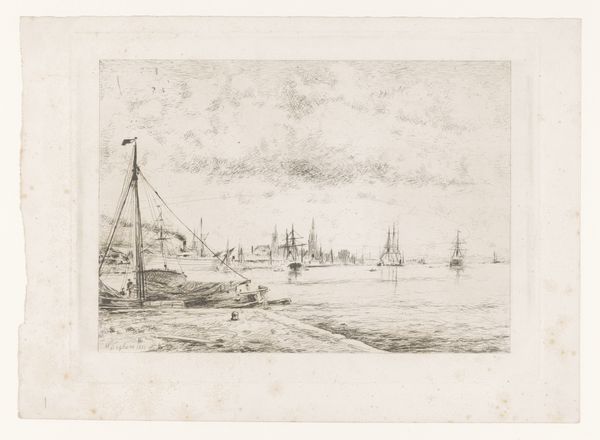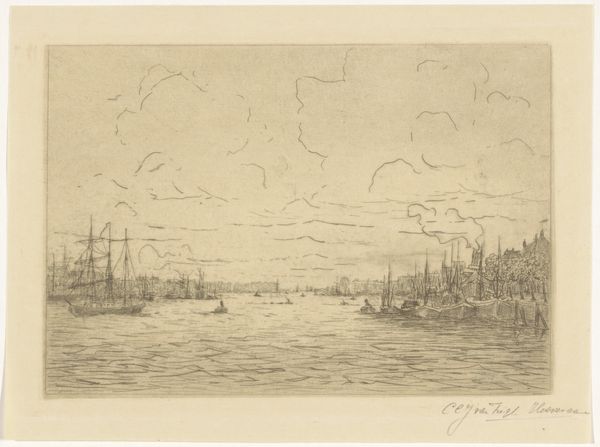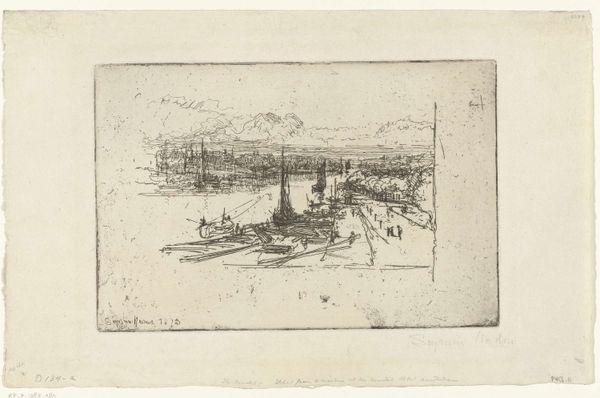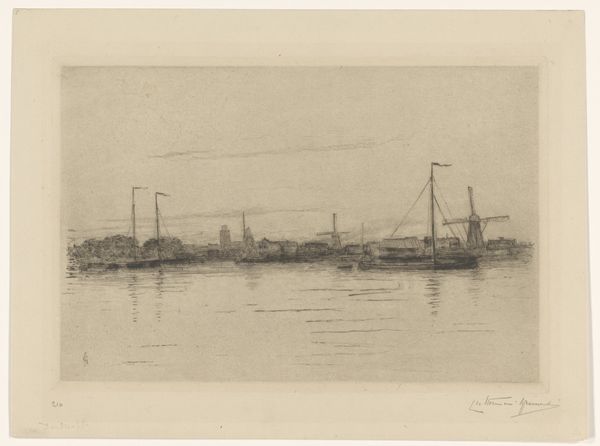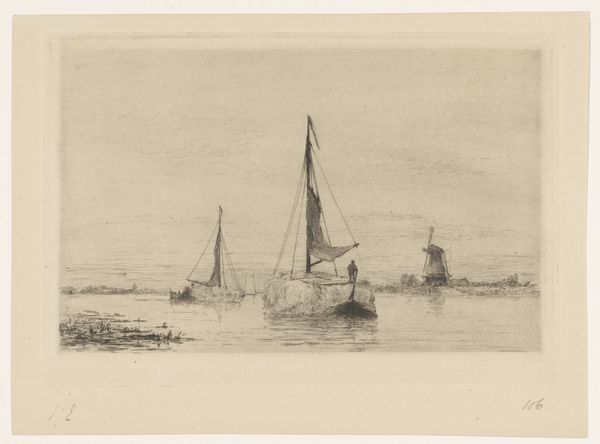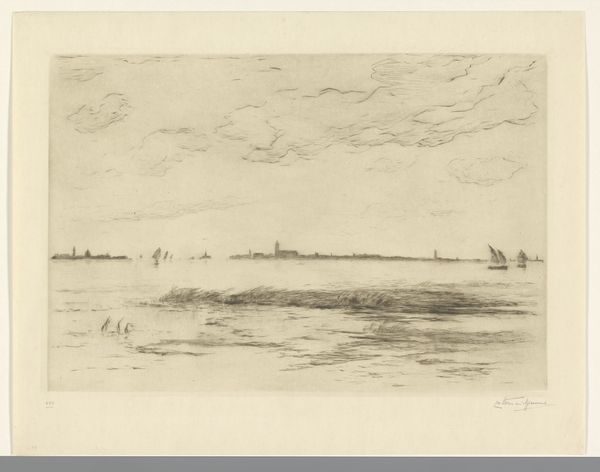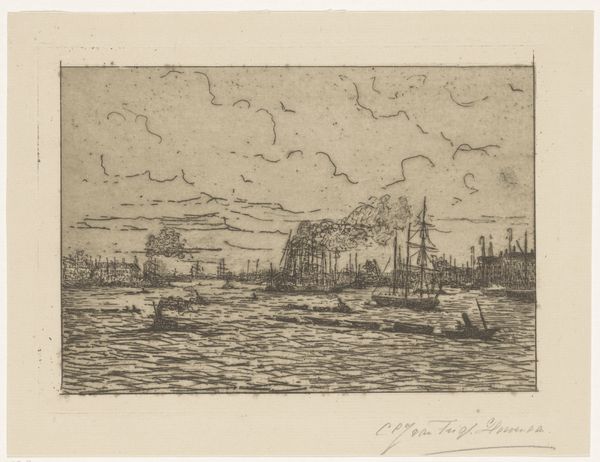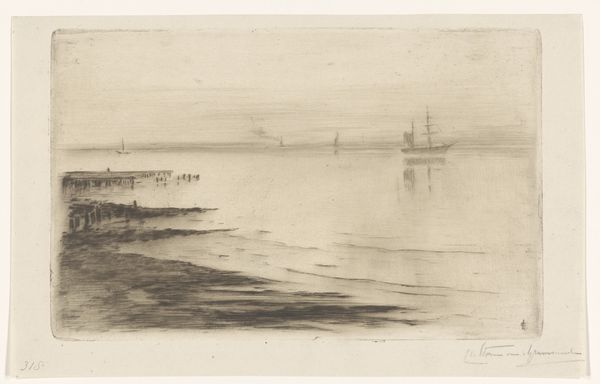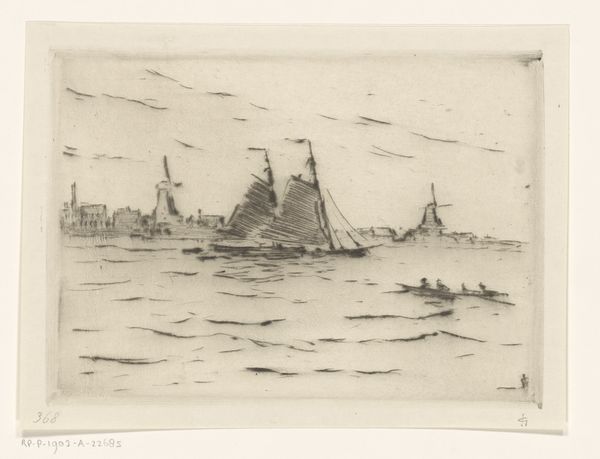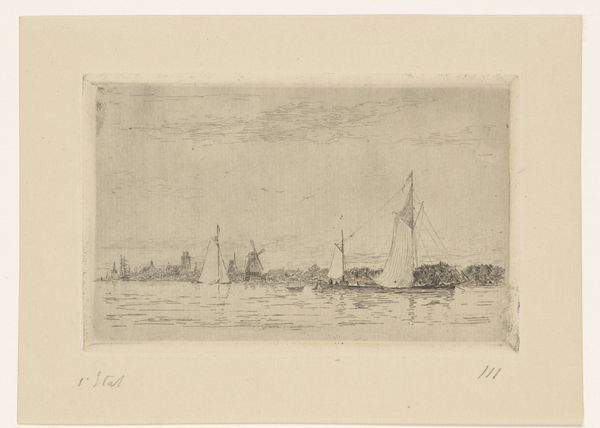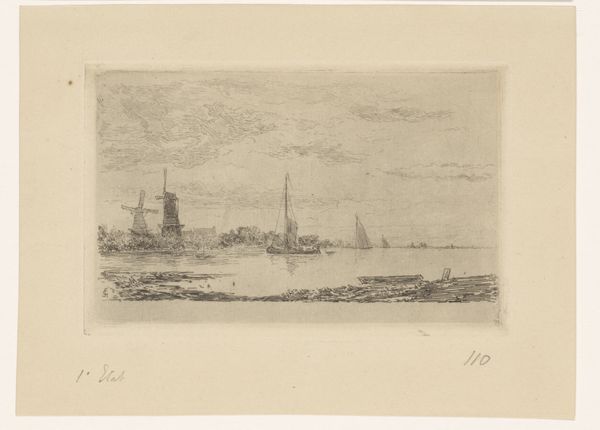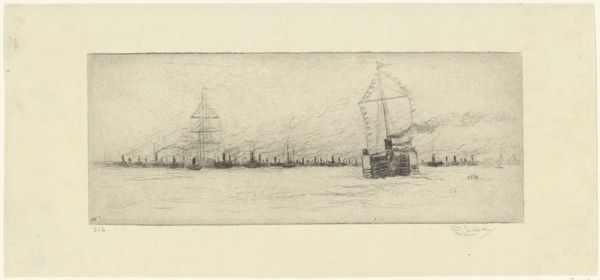
print, etching
# print
#
etching
#
landscape
#
etching
#
cityscape
Dimensions: height 151 mm, width 199 mm
Copyright: Rijks Museum: Open Domain
Curator: There's something about this etching that just pulls you in. Editor: Yes, this understated tonality creates such a melancholy, wistful atmosphere. It feels both intimate and remote. Curator: Indeed. The work is titled "Stadsgezicht vanaf het water" which translates to "Cityscape from the Water," crafted possibly between 1913 and 1919 by Frederika Henriëtte Broeksmit. You can feel a symbolic connection between the etching process, revealing what is hidden or preserved through acid and plate, and the city itself—a layering of historical narratives revealed with light and shadow. Editor: The period interests me— just before or at the tail end of World War I. Look at how the sky seems to press down on the city; those nervous lines are full of unspoken tension, capturing that sense of unease before or perhaps during those war years. I can’t help but consider Broeksmit's position as a woman artist working in that historical moment; this image could reflect that vulnerability, or resistance through landscape. Curator: Notice how the etched lines used to create the clouds don't necessarily look like naturalistic clouds—there’s a definite expressive distortion. What might feel modern in a Fauvist painting instead feels quietly haunting here, suggesting a link between the external environment and the inner world. It makes you question if the symbolic imagery represents a yearning for peace? Editor: I think that’s quite a salient point. This image exists in a context: European cities transformed rapidly through modernization while suffering unprecedented trauma and death during that period. As the Industrial Revolution took hold, you know, working class communities struggled for rights, which changed everything about landscape. Where is the working class representation here? Maybe this is more reflective of bourgeoise complacency. Curator: It is a beautiful image and even though we view through our contemporary critical lens, perhaps her view speaks of the lasting beauty within fleeting reality. Editor: Definitely food for thought, I appreciate your insights! I wonder what the artist intended and what interpretations others may have.
Comments
No comments
Be the first to comment and join the conversation on the ultimate creative platform.
